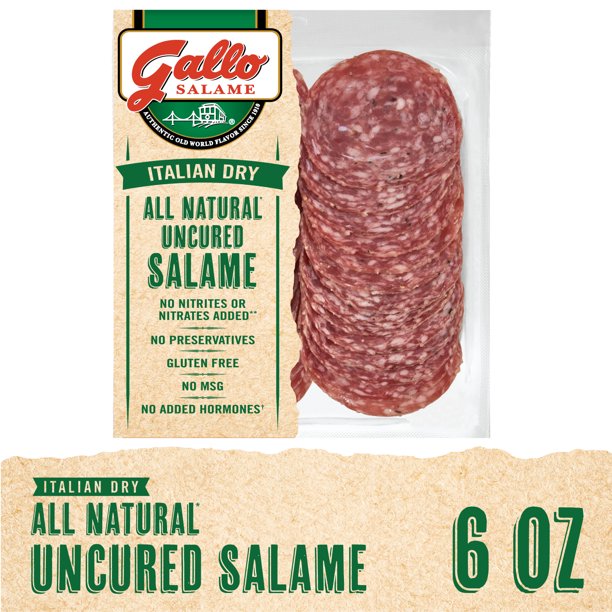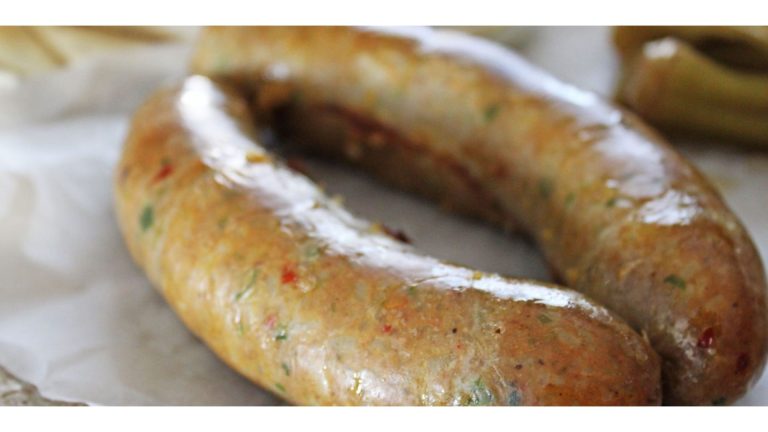Cured Vs Uncured Salami: Differences and Similarities
One of the most popular deli sausages include sandwiches, pizzas, different kinds of pasta, salads, and more.
It is impossible to say which one beats the other in the great battle of cured vs. uncured because there are different kinds of cured and uncured salami.
Cured salami has been preserved with natural salt and vinegar brine.
This method of preservation creates a high-quality product that is more flavorful and tender than uncured salami.
On the other hand, uncured salami is produced using nitrites and sodium nitrate, a preservative agent.
The cured and uncured salami are very similar and should be treated the same way. However, some differences set them apart.
The origin of preservatives is the most important difference between cured and uncured salami.
The uncured variety contains natural ones, while the cured variety contains chemical ones.
If you are interested in learning about the similarities and differences between the two, you have found the right place.
Table of Contents
What Is Cured Salami?
Adding salt, nitrates, nitrites, or sugar to meat is called curing, and it’s the process of preserving food.
The purpose of this is to keep the meat fresh by drawing out the moisture from the meat.
Making the meat saltier and changing its color is a consequence of curing. A cured salami is made from pork meat that has been air-dried and fermented.
Cured salami has a long shelf-life, strong, tangy flavor, is pink/red, and is ready to eat right away.

What Is Uncured Salami?
Cured and uncured are the same thing. You have read it correctly. The USDA regulations state that uncured salami is cured with salt or natural agents.
Natural agents are not counted, according to the USDA. It is possible to preserve uncured salami with salt, juice, and beetroot powder.
The meat industry’s marketing practices can result in the term ‘uncured salami’ being misleading.
People who want to stay away from nitrates and nitrites are more likely to purchase products with this type of labeling.
Uncured salami can contain the same amount of nitrates as the cured version. They are very different from each other.

Similarities and Differences Between Cured and Uncured Salami
Similarities
There isn’t any ‘uncured’ salami as previously mentioned. The uncured version is cured with natural agents, which is more significant than the cured version.
Other than that, cured and uncured salami are the same thing.
- Both have a good flavor.
- Can be eaten without cooking.
- Both are cured.
- Shelf-stable if kept unopened.
- Both need to be stored in the refrigerator after opening.
- Both are made of pork.
Differences
| Cured Salami | Uncured Salami | |
| Preservation | Preserved with chemicals | Preserved with natural substances |
| Color | Pink or red or deeper color | Usually light pink or pale color |
| Flavor | Intense flavor as it is cured with chemicals | Lighter flavor |
| Storage | Shelf-stable | Shelf-stable, but it lasts less than the cured version |
| Salt | Contains less salt due to added chemical preservatives | Contains more salt due to the lack of chemical preservatives |
Is It Safe to Eat Uncured Salami?
It is perfectly safe to eat uncured salami, and you don’t have to cook it before eating it. The most significant difference between cured and uncured is the origin of the preservatives.
Chemicals such as nitrates and nitrites are used for preservation in cured salami. Natural ingredients are used in the preservation of uncured salami.
The term ‘uncured salami’ can be very misleading. Adding natural ingredients to the curing process is part of the process.
Is Uncured Salami Healthy?
When trying to get away from processed meat, people will often reach for products that are advertised as “natural”.
It doesn’t mean that it can’t harm your health, just because it’s natural. The cured version of salami can contain more salt and nitrates than the uncured version.
It depends on how you want it to be. Preservatives will be present either way, but you can choose if you prefer chemicals or natural products.
Benefits of Salami
The positive and negative sides of salami are similar to those found in other foods. The positive ones should be checked out.
Rich in B vitamins
There is a significant amount of B vitamins in Salami. The formation of red blood cells, producing energy, and cognitive development are all done by these vitamins.
Sodium
This can be a benefit and a negative at the same time, depending on your usual diet. Many studies show that the lack of salt in nutrition can harm health.
If you use whole foods in your diet, small amounts of salami can be beneficial because you don’t have as much salt.
Good source of protein
It has 23 grams of Protein per 100 grams, making it an excellent source.
Selenium, zinc, phosphorus
Lowering inflammation, preventing mental decline, and positively affecting the immune system are some of the benefits of selenium.
Your immune system and metabolism should be supported by zinc. The health of bones and teeth needs to have a good source of Phosphorus.
Concerns of Salami
There are some health concerns associated with salami, too. They are:
High-fat content
High cholesterol levels can be caused by the fact that salami is made from pork, which is rich in fat. If you have high cholesterol you are at risk of developing cardiovascular disease.
Sodium
Too much sodium will be a health hazard.
Pathogens
Even though it is extremely rare, you are at risk of getting a bacterial infection when you eat cured or fermented meat.
If the salami wasn’t properly prepared, it could also be a risk for food poisoning.
Conclusion
In the battle of cured vs. uncured salami, there isn’t any winner. Both of them are cured to some extent.
Although there are differences in taste and shelf life, the most significant difference is in the preservatives.
The cured version has a chemical Preservative, while the uncured version has a Natural Preservative. The choice is yours.

Foodie and a passionate cook, I am here to share all of what I know about cooking, kitchen, and food prepping.
Follow me for delicious and healthy recipes.






